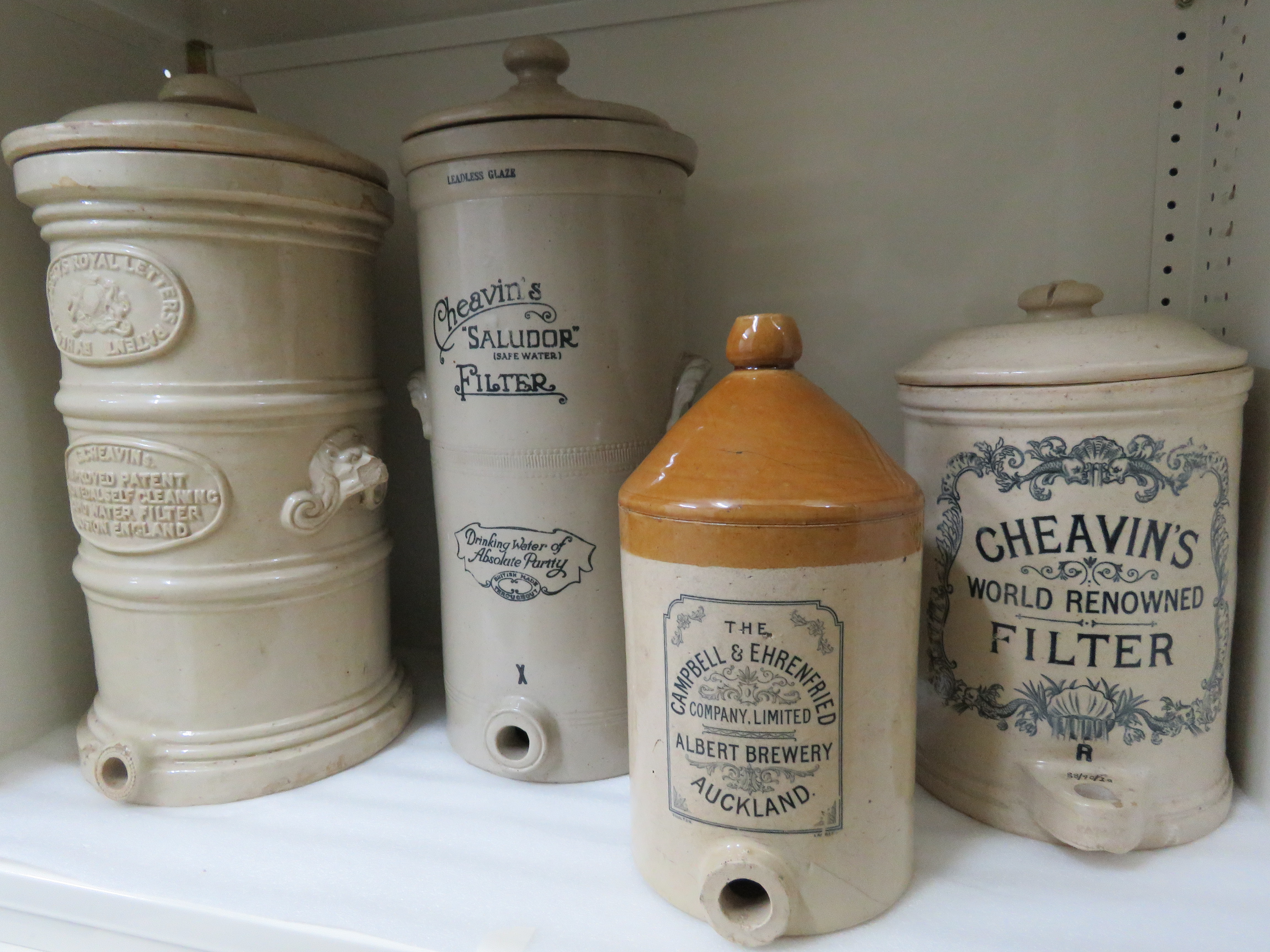Fresh, clean water is something most New Zealanders have come to expect in our everyday lives.However many of us spare little thought into where it comes from and how it gets to our taps. Drinkable water is a luxury and ‘Clean Water and Sanitation’ remains one of the United Nation’s 17 Sustainable Development Goals. Looking back to New Zealand during the 19 th century, access to clean water was a mixed concern. Many settlements around the county grew rapidly in response to increasing immigration and growing industries like gold and timber, leaving the infrastructure to catch up. Sanitation gradually improved over the turn of the 20 th century, starting with Christchurch’s underground sewage system in 1882. Maori living outside of these cities had their own traditional systems of water protection, use, and disposal. Similarly, rural households had more space to separate water supply from waste disposal and benefited from cleaner water access (depending on how far the local stream or spring was). With the same being felt all over Europe and colonial America corresponding with developing medical knowledge, various devices were produced on mass to solve these problems. One such article was the household water filter, which had been around since the 1830s. So simple and successful was this item that we still use the same principle in our houses today.
.jpg?1593079065496)
Whangarei Museum cares for a small collection of ceramic water filters from the early 20th century. Three of these are Cheavin’s brand. The smallest was donated by Mr Keith Strong in 1988. Its identifying label “Cheavin’s World Renowned Filter” is framed by a printed border of botanical sprays, seahorses, fish and clam shells. The body is made from clear (leadless) glazed stoneware, a strong and non-porous ceramic material, perfect for containing large quantities of liquid. Its simple design matched its simple method: the purification of water by passing it through a layer of charcoal. First the lid would have been removed and charcoal (advertised as derived from animals) was poured inside onto a perforated ceramic plate. Together these components acted as the filter as the pure carbon in the charcoal absorbed impurities. Then the water (provided via a local reservoir, spring or well) was added which passed through the charcoal layer to the bottom. Now the clean water could be accessed via a tap and enjoyed. Unfortunately the brass taps are missing from our water filters.
Filters like this could be obtained from a chemist’s or hardware merchants like E. Porter & Co. in Auckland. Some water filters of the period were much more elaborate, made of layers of different shaped cylinders and ornamented with colourful transfer prints and applique. The collection at Kiwi North reflects the simpler, sturdier style, albeit not unattractive, that graced most homes in our region. George William Cheavin was an award winning designer and manufacturer of ceramic filters from the 1860s. His father Squier Cheavin worked as a plumber and glazier in Spalding, Lincolnshire. After Squier moved north to Boston, Lincolnshire, he was granted a patent with his son George for “improvements to an apparatus for filtering and purifying water”. George then manufactured filters from Boston and was successful internationally. In 1876, George Cheavin was one of the only two producers of water filters at an international exhibition of sanitary exhibits, with the other being the London and General Water Purifying Company. Two years later he won the highest prize for his filters at the Centennial International Exhibition in Philadelphia, USA.

In 1889 George Cheavin made a good decision to boost his company by purchasing a well renowned and old (est. 1671) factory in Fulham, London, and joined with their occupants, Fulham Pottery. George was clearly an entrepreneur as he applied for several patents in the early 20 th century for items like combined butter covers and coolers and metal hot water bottles. From their new premises in London, Cheavin’s filters gained popularity among medical practices, governments and even royalty, earning the honour of marking their wares with “By Her Majesty’s Royal Letters Patent”. At some point, Mr. I. W. Cheavin succeeded his father and continued production of vases, brackets, garden figures, modelling clay and pottery kilns among other items. Their taller “Saludor” filters were popular in the 1930s and were exhibited at the British Industries Fair in 1947. Fulham Pottery appears to have closed in the late 1970s. By this stage the 1956 Health Act protected water supplies and the use of domestic water filters has since decreased but still occurs. From large scale filters servicing buildings to tap filters or individual filter jugs people still choose to filter their water and the need is an ongoing debate. Added in are discussions over the ownership and value of many of our water bodies, making water ownership, access and sanitation a complicated topic as relevant today as it was 100 years ago.
Georgia Kerby
Exhibitions Curator, Whangarei Museum
19 May 2020